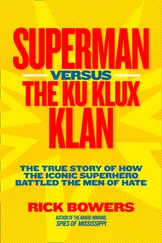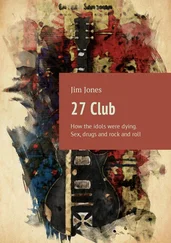The next to reflect Aram influence, however, was not simply a fairly good book, but was a masterpiece – Dickens’ Our Mutual Friend. Here Bradley Headstone has Aram-like features, although Dickens is more influenced by Thomas Hood than by Bulwer. Headstone is a poor schoolmaster, as Aram had been, and as Hood’s poem had represented him. Dickens can therefore stay close to reality as he describes the frustrations of a man whose intelligence and abilities have lifted him out of his original class, but have left him stranded and socially ambiguous, in the middle class but not of it. There are other parallels. The name Eugene is transferred from the murderer to his intended victim, Eugene Wrayburn: from the schoolmaster to the gentleman he wanted to be. Headstone attacks Wrayburn with a stick, as Hood has Aram deal Clark ‘Two sudden blows with a ragged stick’. The chapter in which Headstone attempts to shift the blame for his crime is entitled ‘Better to be Abel than Cain’, just as Hood’s pupil reads ‘The Death of Abel’, and his Aram says ‘murderers walk the earth/Beneath the curse of Cain’. Headstone cools his fevered head in a stream, as Hood’s Aram ‘washed my forehead cool’, and he returns to his schoolroom, as Hood’s Aram ‘sat among the urchins young,/That evening in the school’. There are differences too. Hood’s Aram deeply regrets the crime; Headstone simply regrets that his murderous attack failed. In Hood, the schoolboys sense something wrong, and gaze wonderingly at their master; in Dickens, the schoolboys are as self-absorbed as children usually are, and notice nothing. Instead of the single schoolboy looking sorrowingly on at Aram’s remorse, here Headstone’s favoured pupil thinks only of what Headstone’s disgrace will mean to his own ambitions.
Hood’s version also held sway in the visual arts, with a number of paintings based on his work, from Alfred Rankley’s 1852 Royal Academy piece Eugene Aram in the Schoolroom and Eugene Aram’s Dream, a bas-relief by Matthew Noble that was chosen to represent British Art at the Paris Universal Exhibition of 1855. (As late as 1889, reproductions of this work were still being advertised.) Rankley’s piece was praised in the Athenaeum for its depiction of an Aram ‘gnawed by the conscience-worm that never dies’, and the same publication was even more enthusiastic about ‘two weird drawings’ on the subject by Mr Rossiter, which show ‘the scared murderer coming to the well-known place in the wood, and finding that a mighty wind has laid bare the body. The bare wounded head and clutched hand protrude through the shrinking leaves.’ The story had evidently evolved: a fourteen-years-dead body still showing a wound? What wood? Yet a wood, and a recently murdered victim, had become the dominant pictorial image: at the 1872 International Exhibition praise was given to Alfred Elmore’s picture of Aram in a wood, ‘startled by the half-revealed body of the murdered man lying among the treacherous leaves’. There were further versions on the same subject over the next decades, by A. Dixon, John Pettie (whose murderer was condemned by the Era as looking like a ‘country clergyman … telling the little boy to be sure and come to church next Sunday’) – there was even an image by Thackeray.
The story was now part of middle-class moral education, and Hood’s poem became a favoured party piece for children: Aubrey Beardsley recited it at school in the 1880s, and Lord Alfred Douglas even claimed that Oscar Wilde’s Ballad of Reading Gaol ‘owed something to that fine poem’ too. A vicar in Sunderland lectured on ‘Eugene Aram: his life, trial, condemnation, and execution’ ‘under the auspices of the Baker-street Young Men’s Mutual Improvement Society’. *A Social Reform Society’s weekly entertainment included a reading of Hood’s ballad. The poem was regarded by some as a bit suspect, though, smacking too much of theatre, and too little of moral uplift. The Revd J.C.M. Bellew was condemned by the Birmingham Post for performing it too dramatically: ‘A less demonstrative reading would have been. more suitable.’ Others disagreed:‘Penny Readings for the People’ at Mechanics’ Institutes frequently included the poem.
There were also professional performances of the work. In 1858 ‘Mr Walter Montgomery’ appeared at the Music Hall, Broad Street, Birmingham. On the first night he recited ‘from Memory, the whole of SHAKESPEARE’S TRAGEDY OF “MACBETH”, ASSISTED BY AN EFFICIENT CHOIR’. The next night too was devoted to ‘the BEAUTIES of SHAKESPEARE AND OTHER CELEBRATED AUTHORS’, including ‘Little Jim: a Tale of the Collieries (by desire)’, Poe’s ‘The Raven’, and Hood’s ‘The Dream of Eugene Aram’. Hood seemed not to work in music hall: I have found only one reference to a performance, and the review says the choice was ‘very injudicious’, being ‘long’ and ‘heavy … altogether out of place’. For those who wanted theatre, but could not attend because of religious or moral scruples, Aram was available elsewhere. The Gallery of Illustration in Regent Street staged one-man entertainments from 1850, and in 1873, when a new theatrical adaptation of Eugene Aram opened at the Lyceum with Henry Irving and Ellen Terry, the Era reviewed the Gallery’s last night of the season, which included ‘a new drama, performed for the first time on any stage, entitled Impeached, written apparently [‘apparently’ is wonderful] in blank verse, and in artistic style, by Miss H.L. Walford, who takes for her plot the leading incidents of Eugene Aram’.
Ultimately Henry Irving took over as the supreme reciter of Hood’s poem. At a time when it was still the norm to have two plays on the bill every evening, he performed it in the break between the two; he also frequently performed it separately in mixed programmes. He also had years of success in The Bells, an adaptation of a French play called Le Juif polonais, in which he played a burgomaster who, fifteen years before, had robbed and murdered a man. This long-undiscovered secret is threatened by his guilty conscience, which transforms some passing sleigh-bells into those on the murdered man’s sleigh. Shrieking, ‘The bells! The bells!’ he falls into a fit, is later hypnotized and betrays himself. To follow this success, in 1873 the playwright W.G. Wills took the story of Aram, as glamorized by Bulwer, and turned it into classy West End fare by removing the melodrama: there is no trial, no criminal awaiting execution; Aram is not only not executed, he doesn’t even kill himself. Instead, he just somehow dies, romantically, in a moonlit churchyard in his fiancée’s arms. Perhaps, mocked the Saturday Review critic, ‘he caught cold by sleeping in a damp churchyard’. *By the 1890s, Irving was reciting Hood’s verses with ‘Dr. Mackenzie’s incidental music’. (Alexander Campbell Mackenzie was the principal of the Royal Academy of Music, as well as a conductor and composer.) In 1896, Granville Bantock wrote a four-act opera based on Bulwer’s novel.
Opera was the logical culmination of music and melodrama. Initially, music had been essential to melodrama, as licensing laws barred spoken dialogue in the minor theatres. After speech was reintroduced, music continued to play a major part, not only in the form of songs, but to underscore the emotions of the characters. Every theatre orchestra had its own ‘agits’ (that is, agitatos, music indicating fear or distress), ‘slows’ (slow music for grave moments), ‘hurries’, ‘pathetics’, ‘struggles’ and more. As late as 1912, the catalogue of Samuel French, the theatrical publisher, listed: ‘Incidental Music Suitable for Lively Rise of Curtain, Entrance of Characters, &c., Hurry, Combat, Apparitions, Pathetic Situations, Martial, &c.’ The critic Percy Fitzgerald, who had been one of Irving’s assistants, noted that at transpontine theatres, ‘what so natural as that when smugglers, or robbers, or captives trying to make their escape should, when moving lightly on tiptoe past the unnatural tyrant’s chamber, be kept in time by certain disjointed and jerking music?’ †
Читать дальше












